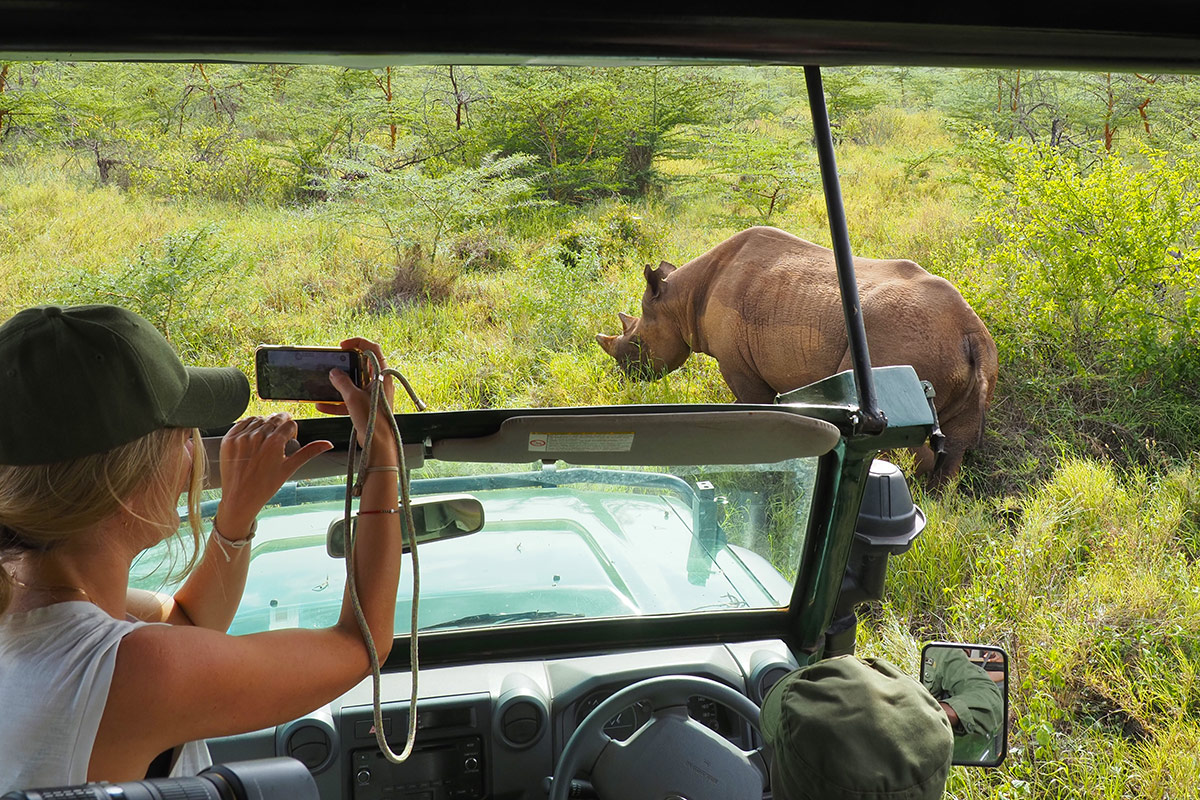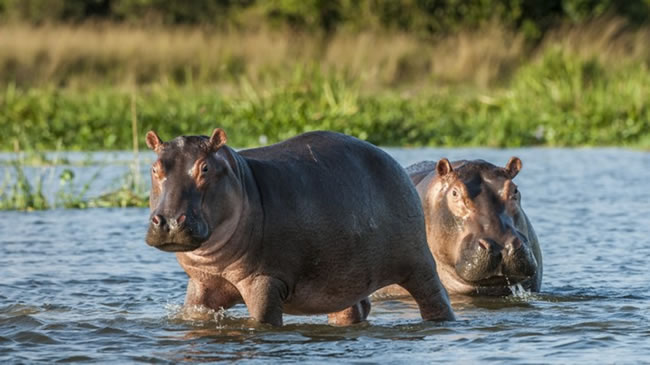Arusha National Park, located northeast of Arusha, is the most accessible national park on Tanzania's…

Mkomazi National Park
Mkomazi National Park, located away from the masses, provides a natural and undisturbed ambiance. With mountains rising in every direction, the panorama is breathtaking. Although the wildlife is sparse, the Big Five are all present. A huge sanctuary allows visitors to get up close and personal with the endangered black rhino, which is either absent or extremely rare in most other Tanzanian parks.
Weather and Climate at Mkomazi National Park
Mkomazi National Park’s climate ranges from dry and mild to very hot. The warmest months are October through April, while the coolest months are May through September. The rainy season is divided into two periods: short rains (November to December) and long rains (March to May), with a dry interval in between. Rainfall occurs frequently but does not usually persist all day.
Dry season.
June to October.
Afternoon temperatures usually reach 27°C/81°F. Nights are chilly, with lows around 16°C/61°F. There is hardly no rain at this time.
June, July, August, and September –
The weather is clear and sunny. The sky turns foggy around the conclusion of the season.
October
The first rainfall near the end of the month help to reduce dust.
Rainy season.
November to May.
Temperatures remain generally stable, as they do during the dry season, but humidity is higher, making the heat uncomfortable. Temperatures in the afternoon are approximately 29°C/84°F, while evenings are around 19°C/66°F.
November and December
– “Light Rain” – It occasionally rains in November and December, although these rains rarely interfere with travel because they do not linger all day. Afternoon rains are more common.
January and February.
There is a dry time in between the short and long rains. The exact timing of this period is unknown.
March, April, and May
– “Big Rains” – Rainfall occurs more frequently, but does not linger all day. These months are the wettest and cloudiest. Increased humidity can cause the atmosphere to become extremely hot.
Fauna of Mkomazi National Park
The breathtaking scenery of Mkomazi National Park serves as the ideal setting for stunning images of Masai giraffes. These gorgeous animals are plentiful and at ease here. You’ll also see plains zebra, Coke’s hartebeest, Grant’s gazelle, and the small Kirk’s dik-dik. Large herds of eland are also present, but they are somewhat skittish and frequently kick up dust as they wander away.

Wildlife Highlights
The Kisima Rhino Breeding Sanctuary, located in the heart of Mkomazi, is one of Tanzania’s most notable conservation success stories. A guided 4WD tour of the Mkomazi Black Rhino Sanctuary, which opened in 2021, is highly recommended. It is an educational experience and one of Africa’s best opportunities to see black rhinos up close in their native habitat. Specialist dryland antelopes like the fringe-eared oryx, smaller kudu, and gerenuk are more likely to be observed in the sanctuary than elsewhere in the park.
Birdwatching at Mkomazi National Park
Mkomazi National Park is an excellent place for birdwatchers. Over 450 bird species have been identified, including several unique species to the dry northern regions, such as the Shelley’s starling and the three-striped tchagra. It is also the only spot in Tanzania where you can see the beautiful vulturine guineafowl. The grassy plains also support large land birds including the ostrich, kori bustard, sagittarius messenger, and southern ground hornbill. Migratory species, such as the European roller, are present from November to April.
List of birds seen in Mkomazi:
Bare-eyed thrush
Black-bellied Sunbird
Around the Eastern vocalist, Friedmann’s Lark.
Hunter’s Sunbird
Kori Bustard – Martial Eagle
Remiz Mouse.
Ostrich
Rose-breasted larks
Pringle’s Gonolek
Red-bellied parrots
Red-fronted Warbler
Pink-mantled Gonolek
Scaly Cockatoo
Sagittarius Messenger
Shelley’s Starling
Somali Crombec, Southern Ground. Hornbill
Three-striped Tchagra.
Purple wood irrisor.
Vulturine Guinea Fowl, White-headed Hummingbird.
Mkomazi Rhino Sanctuary
Mkomazi Rhino Sanctuary, located within Mkomazi National Park, is Tanzania’s first and only rhino sanctuary. In 1989, the Tanzanian government requested the George Adamson Wildlife Preservation Trust to collaborate on reintroducing the endangered black rhino into a gated area known as the Mkomazi Rhino Sanctuary.
Currently, the Sanctuary is home to 50 black rhinos, who are closely monitored by a professional anti-poaching crew. The rhinos are protected in a 55-square-kilometer gated section within Mkomazi National Park, which covers 3,245 square kilometres. Tourists can view them better here than in the park’s vast plains.
Mkomazi National Park accommodations
Mkomazi National Park accommodation provides a variety of possibilities for guests wishing to explore the park’s unspoiled nature and rich animals. Eco lodges, luxurious tents, and quaint hotels are also available, each designed to immerse guests in the park’s natural splendour while providing modern amenities.
Mkomazi Safari Lodge:
A luxurious boutique lodge with 12 accommodations, including canvas tents and thatched suites, that provide modern conveniences and breathtaking views. Guests can participate in activities including game drives, bush walks, and birdwatching.
Mkomazi Lodge:
This lodge, located on the edge of the savannah, offers magnificent cabins with individual verandas, all modern amenities, and a family home. The lodge serves meals made with fresh, local ingredients and boasts breathtaking vistas.
Babu’s Camp:
A mid-range camp featuring nice tents, private bathrooms, and verandas. Guests can enjoy native food, group dinners, and safari activities including game drives and walking safaris.
Pangani River Camp:
Nestled beside the Pangani River, this camp features 12 safari tents with hot showers and individual verandas. It provides a tranquil environment surrounded by the sounds of nature and wildlife.
Mambo Viewpoint Eco-lodge:
This mid-range eco-lodge features cottages and tents with panoramic views of Mkomazi and the Usambara Mountains. Visitors can participate in treks, safaris, and cultural events.
Elephant Motel:
This motel, located just outside the Mkomazi Reserve, has cheap rooms and suites with all modern conveniences. It is an excellent base for touring the park, with dining options featuring both local and foreign cuisine.
How To Get To Mkomazi National Park
The best way to reach Mkomazi National Park is via road from Moshi or Arusha. The majority of travellers arrive at Kilimanjaro International Airport (JRO), which is located between Arusha and Moshi. The 40km travel to Moshi takes around an hour*, whereas the 50km drive to Arusha takes about 1.5 hours*. It is also feasible to fly to Julius Nyerere International Airport (DAR) in Dar es Salaam and then continue on to Arusha Airport (ARK) or Kilimanjaro International Airport (JRO). In most situations, your tour operator will pick you up from the airport.
Mkomazi lies near the little hamlet of Same, 112 kilometres south of Moshi. The travel from Moshi to the park takes around 2 to 2.5 hours*. Mkomazi is a little more remote than other parks in northern Tanzania, yet it is accessible via the Usambara Mountains.



